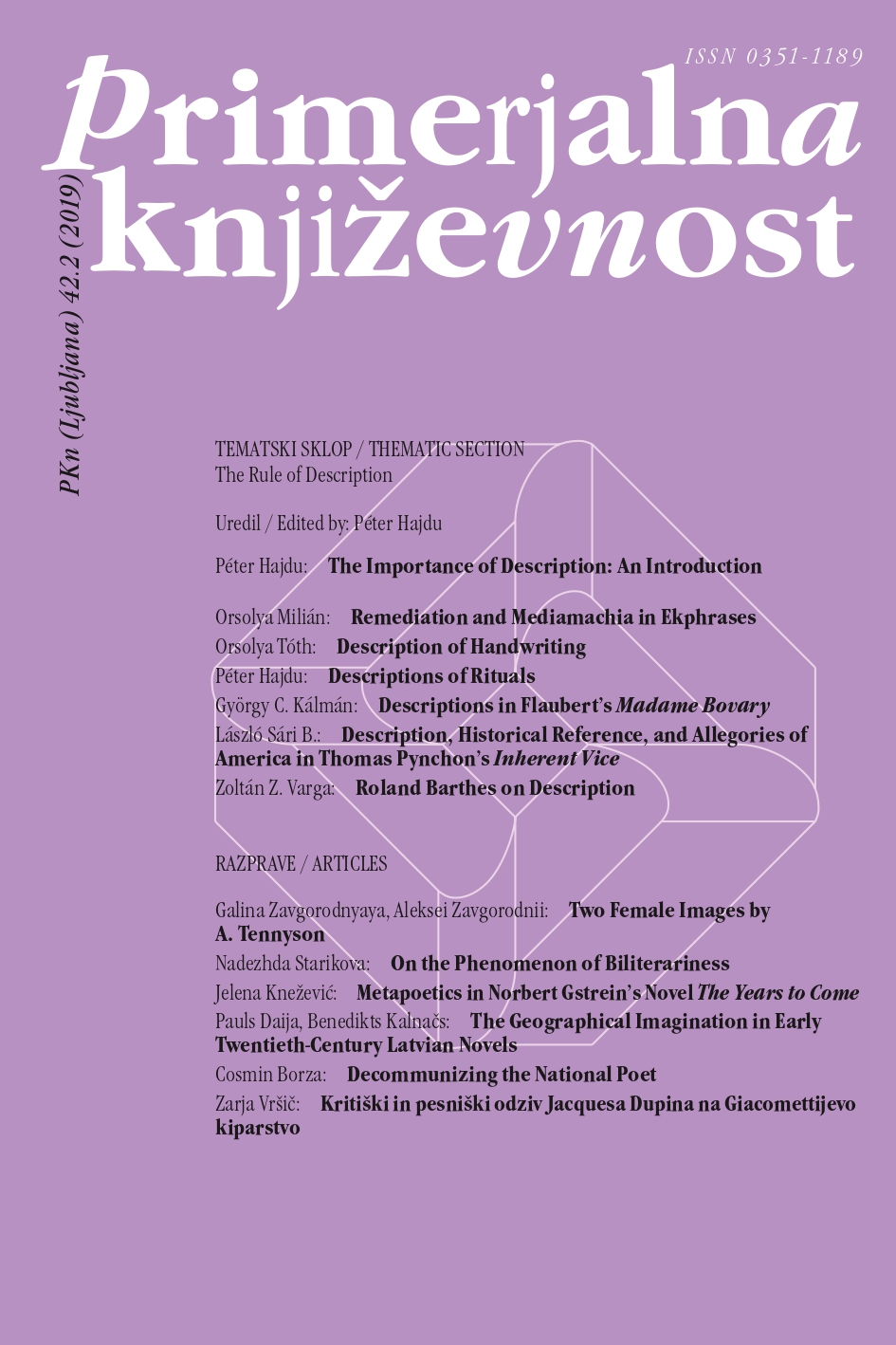Description, Historical Reference, and Allegories of America in Thomas Pynchon’s Inherent Vice
Keywords:
narratology, American literature, postmodernism, post-postmodernism, Pynchon, Thomas, Inherent Vice, narrative technique, description, allegory, noirAbstract
Thomas Pynchon’s Inherent Vice, the concluding novel in his California trilogy exhibits a curious allegorical structure of California and, by extension, America, by way of descriptions of historical reference. This paper argues that these descriptions constitute a system that reflects the contemporary moral and political anxieties of post-postmodern fiction in the immediate context of the novel’s publication. What is more, the text employs Pynchon’s “stylistic, residual postmodernism” in order to put forth a powerful cautionary tale when relying on and reconfiguring the generic codes of noir.References
Anderson, Paul Thomas, dir. Inherent Vice. Warner Bros., 2014.
Benea, Diana. “Post-Postmodernist Sensibility in Thomas Pynchon’s Bleeding Edge.” B.A.S. 21 (2015): 143–151.
Bersani, Leo. “Pynchon, Paranoia, and Literature.” Representations 25 (1989): 99–118.
Cook, Simon. “Manson chicks and microskirtied cuties: pornification in Thomas Pynchon’s Inherent Vice.” Textual Practice 29.6 (2015): 1143–1146.
Kakutani, Michiko. “Another Doorway to the Paranoid Pynchon Dimension.” The New York Times August 3, 2009.
Niskanen, William A. Reaganomics. An Insider’s Account of the Policies and the People. Oxford: Oxford UP, 1988.
McLaughlin, Robert L. “Post-Postmodern Discontent: Contemporary Fiction and the Social World.” Fiction’s Present: Situating Narrative Innovation. Eds. R. M. Berry and Jeffrey Di Leo. Albany: State University of New York Press, 2008. 101–117.
Pynchon, Thomas. The Crying of the Lot 49. Philadelphia: J. B. Lippincott & Co, 1966.
– – –. “A Journey into the Mind of Watts.” The New York Times June 12, 1966.
– – –. Vineland. New York: Little Brown, 1990.
– – –. Mason & Dixon. New York: Henry Holt & Co., 1997.
– – –. Inherent Vice. New York & London: Penguin, 2009.
– – –. Bleeding Edge. New York & London: Penguin, 2013.
Rogin, Michael. Ronald Reagan, The Movie: And Other Episodes of Political Demonology. Berkeley: University of California Press, 1987.
Shoop, Casey. “Corpse and Accomplice: Fredric Jameson, Raymond Chandler, and the Representation of History in California.” Cultural Critique 77.4 (2011): 205–238.
Shoop, Casey. “Thomas Pynchon, Postmodernism, and the Rise of the New Right in California.” Contemporary Literature 53.1 (2012): 51–86.
Wilson, Rob. “On the Pacific Edge of Catastrophe, or Redemption: California Dreaming in Thomas Pynchon’s Inherent Vice.” Boundary 2 37.2 (2010): 217–225.


